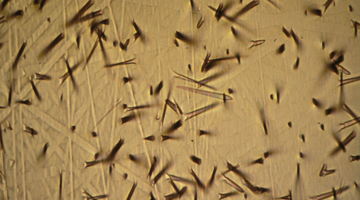Dr Christine Prior is Team Leader of the Rafter Radiocarbon Laboratory at GNS Science. In this video, she compares conventional and accelerator mass spectrometry (AMS) radiocarbon dating. AMS is faster and needs a much smaller sample, but is more expensive. Also shown are views of bone preparation at the Waikato Radiocarbon Dating Laboratory.
Transcript
DR CHRISTINE PRIOR
In conventional radiocarbon dating, you’re measuring the presence of the C-14 when you measure the radioactive decay. The C-14 decays with the beta particle, and you have some detection equipment and you count the C-14s one by one.
Accelerator mass spectrometry is not dependent upon the radioactive decay. What you’re doing is measuring all of the carbon isotopes in the sample – the 12, 13 and 14 – the accelerator operates like a giant mass spectrometer. A mass spectrometer is an instrument that uses a series of magnets to bend a beam of ions and then physically count how many there are, so with AMS radiocarbon dating, we can measure a carbon-12, 13 and 14 beam, and we measure the ratio of 14 to 13, and from that, we can tell how much C-14 is in the sample.
So the most important things about AMS radiocarbon dating as opposed to conventional is that the sample size is much, much smaller. The measurement time is much more rapid – you don’t have to sit around and wait for the carbon-14s to decay – and also the precision is better.
Well unfortunately, AMS dating is expensive because of the amount of equipment that’s involved and because the sample preparation is a lot more labour intensive. So if you have very large samples – you’ve got a big hunk of wood out of an archaeological site or a big piece of charcoal or something – and you have a very limited budget, conventional dating is worth doing because you get a result and you can possibly get more results with your budget than with AMS dating.
However, in many circumstances, sample size dictates AMS. When you’re measuring something like a pollen concentrate or a single seed out of a sediment, you really need to do AMS because you simply don’t have enough material for conventional dating.
Acknowledgement
Dr Fiona Petchey, Waikato Radiocarbon Dating Laboratory, University of Waikato


